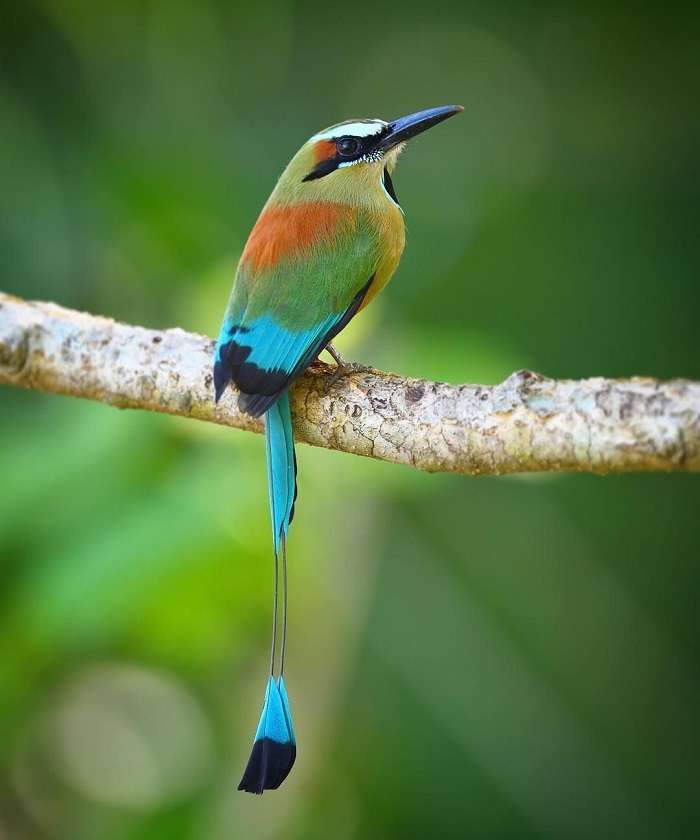In the Yucatan Peninsula, the rich variety of singular, beautiful species that inhabit the region gives the area a deserved reputation as being one of the world’s most incredible areas of biodiversity. Among all these species – including jaguar, tapir and ocelots – are an unparalleled array of birdlife, which as well as being visually spectacular also happen to have a rich cultural significance, especially for the indigenous Maya of the region.

Observing and revering various animals serves practical and cultural purposes for the Mayan people, enriching both these human communities and the conservation of the wildlife itself. Specifically, many birds in the Mayan world are a source of cultural myth, scientific and agricultural understandings, and religious and spiritual significance. As indigenous leader Pedro Uc explains, the Mayan people and birds are inextricably linked through their common “language and way of seeing,” representing the depth to which these communities are able to connect with and appreciate the endless variety of birds that call the Yucatan home.
One of the most visually striking birds in the Yucatan is the Turquoise-Browed Motmot, a species whose physical characteristics and habits both hold importance to the Mayan people.

With regards to their appearance, Turquoise-Browed Motmots possess vibrant plumage of green, orange, and turquoise, ending in two tails that each contain a small feather, causing the tail to appear like the hands on a clock. From this feature emerged a Mayan legend. The story goes that the motmot was given the duty of waking up the birds of the forest to signal that the sun was about to arise, but one day the motmot failed to wake up and did not fulfil his task. Because of this, the eternal father came and stripped the motmot of all of its tail plumage, save for two small feathers that appeared like the hands of the clock, ensuring that the Motmot would never again neglect his duty. The story of the motmot is just one example of how Mayan communities use animals as central characters in their storytelling, passing a plethora of life lessons onto each successive generation.
Besides being the focus of a rich Mayan origin story, the motmot continues to act as a practical signal for indigenous Yucatan communities. Motmots generally construct their nests and seek shelter in cenotes: jungle caves and crevices filled with fresh water. Therefore, a visit from a group of motmots signifies that there is likely freshwater nearby, and following their path as they flee for cover will lead you to a freshwater cenote. This crucial service that motmots provide to the Mayan people has earned them the status of “guardians of the water”, a name fitting for their ability to guide indigenous communities to the source of all life.
While motmots thrive in many regions of the Mayan jungle, it is quite easy to see these magnificent birds in urban and semi-urban areas. The Turquoise-Browed Motmot is a specifically bold bird, which can be viewed perching on highway telephone cables, in semi-urban gardens, and open fields.
The other Mayan bird closely intertwined with the presence of water is the swift. Similar to motmots, these birds often inhabit cenotes, but are valuable to the Maya for a distinct reason. When these birds begin to fly low over trails and pathways, indigenous communities know that the rainy season is about to arrive, and begin to plant their crops in preparation. The swifts effectively act as a living calendar, marking the change of seasons with their distinct habits and representing a crucial element of Mayan agriculture. This behavior has earned the bird high praise amongst Mayan communities, with many Yucatan towns bearing names related to the swift. In fact, the name Cozumel Island comes from a Mayan phrase meaning “land of the swift.”

While motmots and swifts enrich indigenous communities with their physical allure and environmental signals, the hawk, or gavilan, acts as a different type of guide for native people. Because of its ability to soar from great heights, the Mayans see the bird as a reminder of the necessity of looking at the world with a broader lens: taking in a wider perspective that encompasses all of Earth’s complexity and beauty. The hawk is also revered for its intelligence, and one Mayan legend comments on the bird’s ability to save people from sickness, hunger, and environmental disasters. In its totality, the hawk represents an amalgamation of ideal human characteristics, providing a standard for how the Mayan people should best contemplate and exist in this world.
In the Mayan world, birds invigorate the livelihoods and culture of indigenous people. While intrinsically valuable, these animals also hold stories and secrets, resource knowledge, and unique physical features that make each species distinctly valuable and precious to these communities. When we think about avian life and conservation, we must recognize, as the Mayans do, that the fate of birds is deeply intertwined with the fate of humanity; protecting these birds means protecting ecosystems, cultures, and people.
For Times Media Mexico, Sophie Liebel in Campeche
